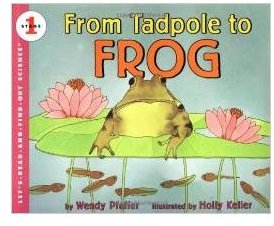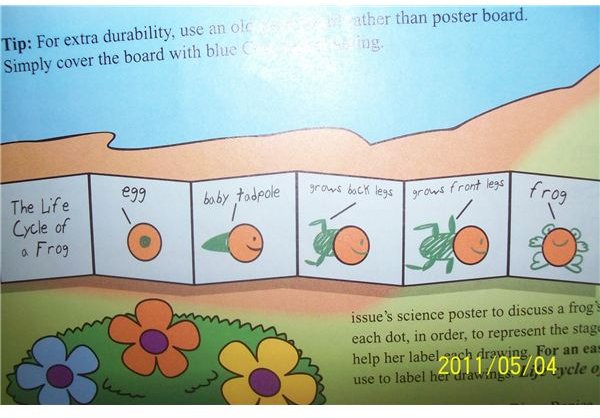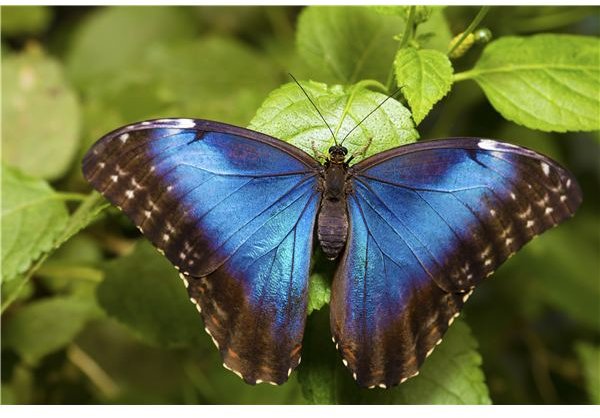Life Cycles for Preschool Kids - Frogs, Butterflies, Chicks, and Plants
Teaching Life Cycles for Preschoolers
A life cycle is a sequence of stages through which a living organism passes. Each member of a species goes through the same stages as its parents. Show students a picture of a baby, child, young adult and elderly person. Discuss how we go through different stages in our lives. Ask children to bring in a baby picture and a recent picture of themselves. Tell them they will be learning the life cycle of the frog, chick, butterfly and plant.
[caption id="" align=“aligncenter” width=“600”]
Frog Life Cycle Activity
Show an example of the life cycles for preschool frog craft. Read the book From Tadpole to Frog by Wendy Pfeffer before starting the activity.
[caption id="" align=“aligncenter” width=“600”] From Tadpole to Frog by Wendy Pfeffer[/caption]
From Tadpole to Frog by Wendy Pfeffer[/caption]
What you need
- Bubble wrap (with small bubbles)
- Black plastic garbage bag
- Black or green ink pad
- Marker
- Glue
- Scissors
- Green construction paper
- Paper Plate
What to Do:
- Use the marker to draw lines on the paper plate and divide it into fourths.
- On the top left portion, glue a square of bubble wrap. Assist your child in labeling this part of the plate “eggs”. Explain that frogs hatch from clusters of eggs laid in the water. Ask your child to describe what the eggs look like - they are clear, or see-through, and they are all clumped together. Explain that real frog eggs are like jelly.
- Use scissors to cut several small tear-drop shapes from the garbage bag, then glue them on the top right portion of the plate. Position them horizontally, so they look like they are swimming. Assist your children in writing the word “tadpole” to label this stage of the frog’s life. Explain that the eggs hatch into little creatures called tadpoles, and ask your child to describe what they look like - They are black, and have a big end – the head – and a pointy end – the tail. Explain that tadpoles swim around in the water like little fish. Ask your child if these baby frogs look like grown-up frogs.
- Have your child stamp her thumbprint two or three times on the bottom right portion of the plate. This will be the larger tadpoles’ heads. Use scissors to cut pointy triangle shapes from the garbage bag to create the tadpoles’ tails. Glue these to the thumbprint heads. Then, use the marker to draw front and back legs on the larger tadpoles. Draw on a mouth and eyes. Assist your child in labeling this piece “froglet”. Explain that the tadpole changes as it grows bigger. It grows legs in the back first, then in the front, and finally, its tail starts to disappear. Now it’s almost a grown-up frog, and it is called a froglet. Ask your child to tell you if it looks more like a grown-up frog now.
- Cut out a simple frog from the green construction paper. Glue it onto the last fourth of the paper plate. Use the marker to draw on eyes and a mouth. Assist your child in writing the word “frog” to label this final stage of the frog’s life cycle. Explain that the frog is now an adult. It can now leave the water, and it can lay eggs of its own.
- Have your child use the paper plate model to re-tell the frog’s life cycle in her own words.
From Tadpole to Frog Activity
[caption id="" align=“aligncenter” width=“600”] Learn about the frog life cycle[/caption]
Learn about the frog life cycle[/caption]
This is a great frog life cycles for preschool booklet that children will love making. Use sticky dots for a unique frog life cycle booklet. Help each student accordion-fold a 3" by 18" paper strip to make six sections. Prepare word strips for each youngster to use to label the drawings. Materials:
- 3" by 18" paper strip for each student
- Pre-made word strips with the words egg, baby tadpole, grows back legs, grows front legs, and frog written on them.
- Sticky dots
Directions: Have each child place a sticky dot on each of the five pages and add details to the sticky dots by drawing the tadpole body and legs.
Life Cycle of a Butterfly Activity
Explain to students that a butterfly lays a tiny egg on a leaf. A caterpillar hatches from the egg and after eating a whole bunch it turns into pupa and forms a hard protective shell around its body. The pupa opens and a butterfly is born. Read the book The Very Hungry Caterpillar by Eric Carle Materials:
- 2" by 8" tagboard strips
- Variety of pasta types and colors such as orzo, spirals, shells, and bow ties
Directions: The teacher will write the words “egg”, “caterpillar”, “chrysalis”, and “butterfly” on the strips. The children will glue the pasta onto his strip and draw details - or the teacher can have the details drawn - to create the butterfly life cycle.
Butterfly Life Cycle Interactive Song
Interactive songs are a great way to teach life cycles to preschool children. The Little Caterpillar ( sung to tune of the Itsy Bitsy Spider)
The little caterpillar climbed up into a tree (climb fingers of one hand up other arm)
Spun his cocoon and slept so quietly (spin hands and sleep)
All through the winter he didn’t make a sound (shake head with finger in front of lips)
He dreamt of his new life when he’d be flying around. (pretend to sleep)
While he was sleeping the snow did gently fall (fingers wiggle down)
Winter came and went then he heard the robin’s call “Come on Mr. Butterfly, out of your cocoon (hands to mouth and shut)
Spread your wing’s and fly for me while I sing my tune.” (spread arms and wave)
Chicken Life Cycles for Preschool Activity
Teach children about the life cycle of a chicken. Explain how a female chicken (hen) lays an egg and when the egg hatches a chick is born. Show videos of real eggs hatching. This hatching egg craft will reinforce the lesson. Materials:
- Cardboard Egg Cartons (shell)
The Chick:
- Yellow pom pom or cotton balls dyed yellow
- Small googly eyes
- Orange construction paper
- Glue
Directions: The teacher will have egg cartons separated and cut. Each child will have two egg carton halves to place their chick into. Students will glue the cotton balls together and put the googly eyes and pre-cut beak out of orange construction paper onto the chick. They will put glue in one egg carton and glue the chick into the egg. They can put the top on and off. The egg will look cracked like the chick is trying to hatch.
Plant Life Cycle Science Experiment and Activity
Read the book The Tiny Seed by Eric Carle to introduce children to the plant life cycles for preschool. Talk about how seeds are planted in the ground and how they need plenty of sunlight and water to grow. Have children plant a flower seed in a baby food jar. The teacher will tell the children they are going to experiment. The teacher will plant four additional jars, ones with soil over the seeds and one without soil. The teacher will place some where the sun can get to it and others where they won’t get sun. Students will observe the seeds and their plants which are in a sunny area and keep notes on what happened to each jar. Do the seeds without soil grow? Do the seeds without sun germinate as quickly as those with sun? Students will keep a daily log of what happens and draw pictures showing the different outcomes.
Dandelion Craft
Children will love making these cute dandelion look-alikes to confirm that spring has sprung for a life cycles for preschool unit. Materials:
-
3 pre-cut stems from green construction paper for each child
-
Dark blue and green construction paper
[caption id="" align=“aligncenter” width=“600”]
 Dandelion fun craft[/caption]
Dandelion fun craft[/caption] -
Cotton balls
-
Glue
Directions: To begin, cut three stems and several leaves from green paper. Glue the cutouts to a 9” x 12” sheet of dark blue construction paper. Next, glue a narrow strip of fringed, green paper to the lower edge of the project to resemble grass. To make the fluffy dandelion heads, dot a circle of glue at the top of each stem; then pull tiny tufts from a cotton ball and press them into the glue. If desired, glue a few tufts blowing in the breeze. Aren’t these dandelions just dandy?
Closing
Children will learn about the life cycle of the frog, chick, butterfly and plant with these activities. In addition to all of these fun, interactive activities for a life cycles for preschool unit there are several online games that kids will love playing.
References
Ready to Go Lessons, The Mailbox, 2010 Edition, by The Mailbox. Exploring Nature With Your Kids, The Mailbox Butterfly Song, https://www.thevirtualvine.com/ Photos courtesy of Lisa King
